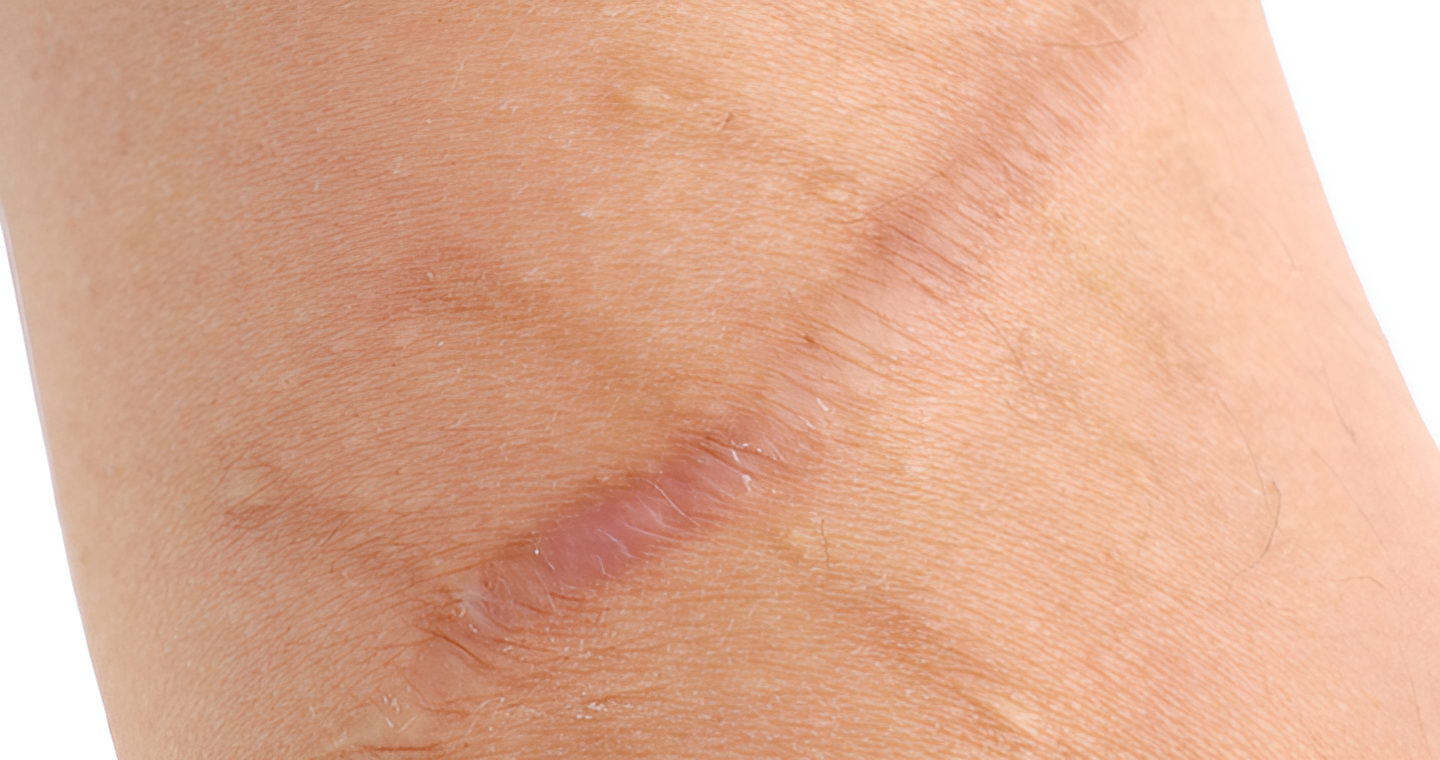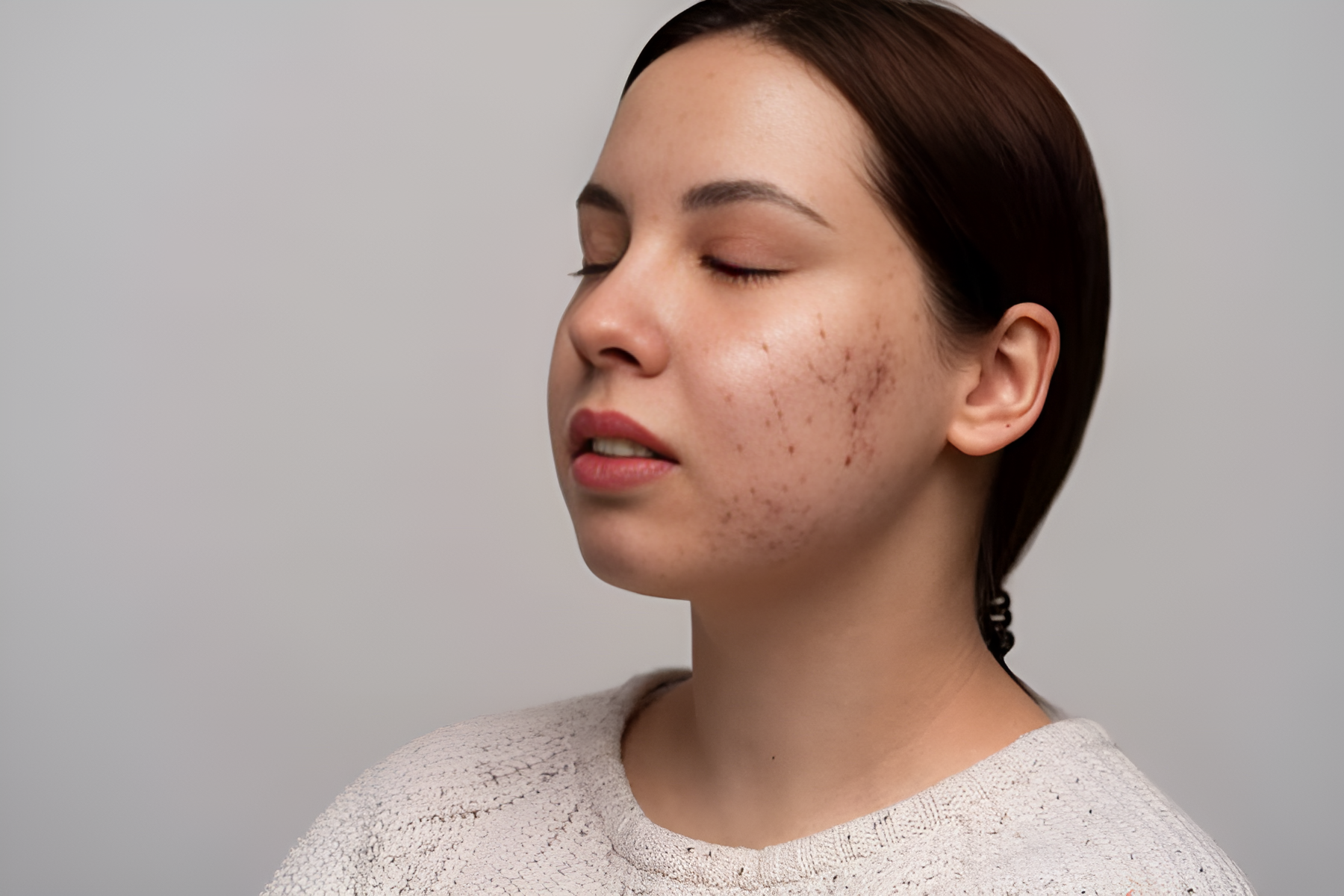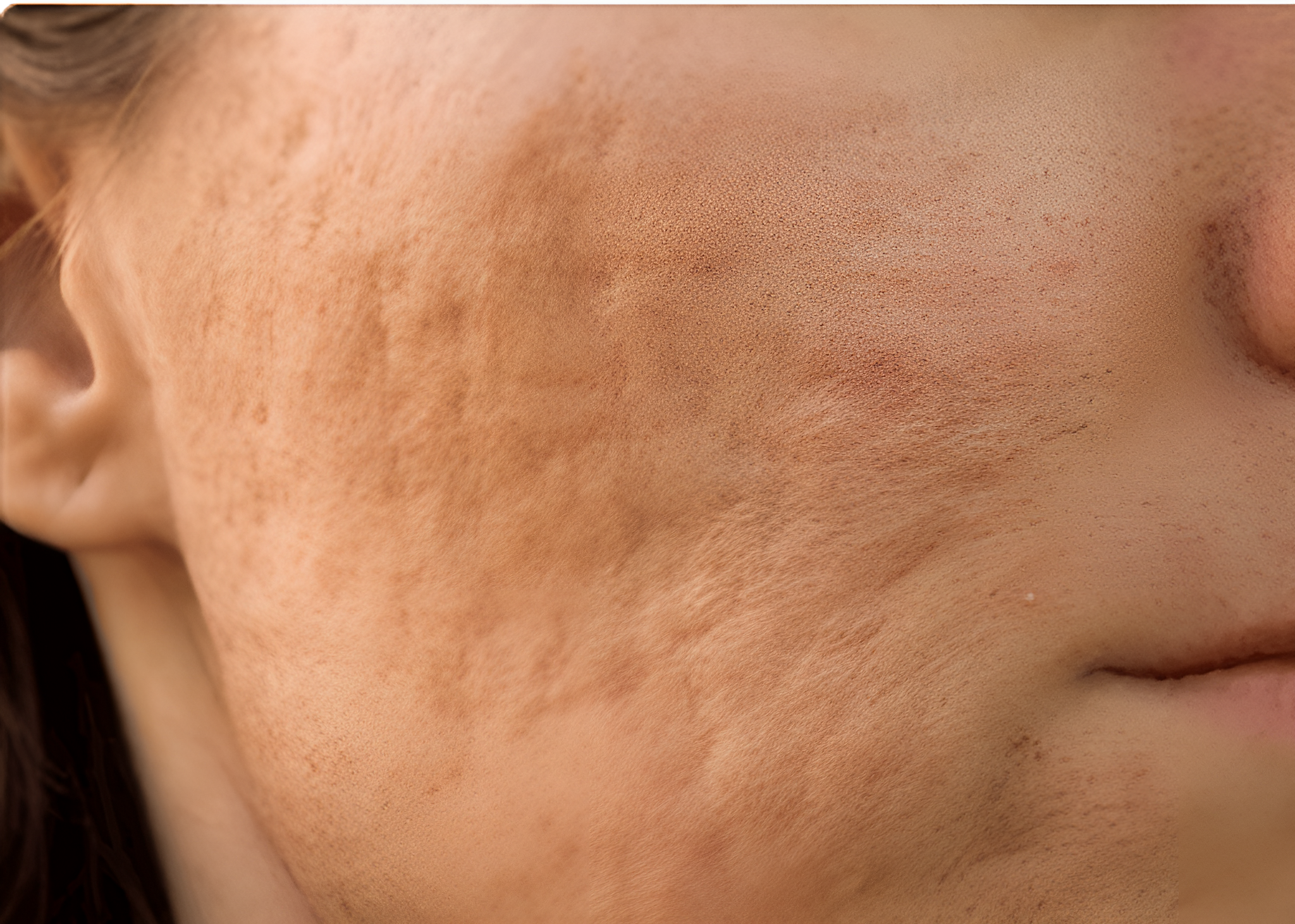Scars are a natural part of the skin healing process, but not all scars heal the same. Hypertrophic scars, for example, can become overly prominent on the skin. If you’re facing issues with this type of scar, understanding what they are, their causes and the available treatment options can help you manage their appearance effectively. This post covers all the basics about this type of scar and offers practical treatment strategies to reduce its visibility.
What are Hypertrophic Scars?
Hypertrophic scars are raised, red and thickened areas of skin that form at the site of a wound. Unlike keloid scars, which can extend beyond the original wound, hypertrophic scars tend to stay within the boundaries of the injury. They are the result of an overproduction of collagen during the healing process.
Typically, these hypertrophic scars develop after burns, cuts, piercings or other skin injuries. Their appearance can vary, but they often appear red or purple and feel firm or rubbery. It’s worth noting that hypertrophic scars can fade and become less noticeable over time, although they rarely disappear without intervention.
Causes of Hypertrophic Scars
Understanding the causes of hypertrophic scars is crucial for prevention and effective management. These scars arise from the body’s excessive response to skin injury, involving several key factors that influence their development:
Depth and Severity of the Wound
Hypertrophic scars are more likely to develop when the wound is deep and severe. Deep wounds disrupt more skin tissue, and, as a result, the body’s healing process becomes more aggressive, leading to excessive collagen production, which forms a thick, raised scar. Surgical wounds, deep abrasions and injuries that reach into the dermis layer of the skin are typical examples that may evolve into hypertrophic scars.
Location of the Wound
The site of the injury significantly affects the likelihood of hypertrophic scarring. Areas of the body where the skin is naturally under more tension or is frequently moved, such as the shoulders, chest and joints like knees and elbows, are particularly prone to these types of hypertrophic scars. Skin tension interferes with healing, often leading to more pronounced scar formation.
Genetic Predisposition
Genetics play a critical role in how your skin heals. Some individuals are genetically predisposed to produce more fibrous tissue during healing, which can lead to more hypertrophic scars and keloids. If you have a family history of hypertrophic or other types of excessive scarring, such as keloids, you are at a higher risk of developing them as well.
Inadequate Wound Care
How a wound is cared for while it is healing can significantly impact the process and scar formation. Proper wound care involves keeping the wound clean, adequately dressed and moist. Poor wound care, leading to infection or prolonged healing times, can exacerbate the formation of hypertrophic scars. Bacteria can also increase inflammation, stimulating excessive collagen production as the body attempts to heal the wounded skin.
Infection During Healing
Infections can severely disrupt the normal healing process and lead to worse scarring. Bacteria and the resultant immune response increase the production of growth factors that stimulate fibroblast activity and collagen production, key components in hypertrophic scar formation.
Excessive Movement or Tension on the Wound
Mechanical stress on a healing wound is another significant factor that can lead to hypertrophic scarring. Suppose a wound is located in an area of the body that experiences frequent movement. In that case, the continual stress can cause the wound to reopen or become irritated, leading to more scar tissue as the body attempts to heal repeatedly.
How to Identify Hypertrophic Scars
Hypertrophic scars are notable for several key characteristics that can help their recognition and management. Here’s how you can identify them:
- Redness and raised texture. Hypertrophic scars are predominantly raised above the surface of the surrounding skin and typically exhibit a red or pink hue when they first form. This colouration can fade, but the raised nature remains a consistent feature. The texture of these scars is also distinctive; they can feel firm or rubbery to the touch.
- Firmness and thickness. The tissue of hypertrophic scars is denser and thicker than the normal skin around them. This firmness is due to the body’s excessive collagen deposits that heal the wound. The dense collagen makes these scars stiffer and can contribute to the discomfort or itchiness that some individuals experience.
- Size and shape. While hypertrophic scars are contained within the boundaries of the original injury, they can thicken and become more pronounced over time. They do not, however, extend beyond the original wound area, unlike keloid scars, which are characterised by their growth outside the initial boundaries of the wound.
- Change over time. Initially bright red or pink, hypertrophic scars may change colour as they mature, often paler than the surrounding skin. Despite these changes, the raised nature of the scar typically persists.
- Symptoms. It is common for hypertrophic scars to be itchy or uncomfortable, especially in the early stages of their development. Some individuals may also experience pain, particularly when the scar is in an area of frequent movement.

Treatment Options for Hypertrophic Scars
While hypertrophic scars can be persistent, various treatment options are available to manage and reduce their appearance. The choice of treatment depends on factors such as the scar’s size, age and location. Here’s a look at some popular treatments:
Corticosteroid Injections
Corticosteroid injections are a common treatment for hypertrophic scars. These injections help reduce inflammation and flatten the scar over time. Administered directly into the scar tissue, they decrease collagen production and soften the scar’s texture.
Typically, several injections are required over several weeks or months to achieve the desired results. While effective, it’s important to discuss potential side effects with a healthcare provider, as prolonged use can lead to skin thinning or discolouration.
Laser Therapy
Laser therapy is another option for treating hypertrophic scars. This treatment uses focused light beams to remove the outer layer of skin or stimulate collagen production beneath the surface. The specific type of laser used can vary depending on the scar’s characteristics.
Laser therapy can improve the texture and colour of hypertrophic scars, making them less noticeable. However, multiple sessions might be needed to see significant improvement.
Surgical Excision
In some cases, surgical excision might be considered for hypertrophic scars. This involves cutting out the scar tissue and closing the wound with sutures. While this method can effectively remove the hypertrophic scar, the new wound may develop into another hypertrophic scar. Surgical excision is often combined with other treatments like corticosteroid injections or silicone sheets to support optimal healing.
Six Prevention Tips for Hypertrophic Scars

Preventing hypertrophic scars is often easier than treating them. Here are six tips to treat hypertrophic scars and help reduce the likelihood of their formation:
1. Ensure proper wound care
Proper wound management is crucial for preventing hypertrophic scars. Begin by gently cleaning the wound with mild soap and water to remove debris and bacteria. This step minimises the risk of infection, which is crucial as it can complicate the healing process and increase the chances of severe scarring.
Once the wound is clean, apply an appropriate sterile dressing. The dressing acts as a barrier against bacteria and helps keep the wound environment moist, which is conducive to better healing.
Change the dressing as recommended to maintain cleanliness. Keeping the wound covered protects it from external irritants and reduces the chances of further injury, allowing the skin to heal smoothly and with minimal scar formation.
2. Apply silicone sheets or ointments
Silicone-based products are highly regarded for their effectiveness in scar management, particularly in preventing and treating hypertrophic scars. Silicone sheets or ointments cover the wound or scar, providing a protective layer that helps retain moisture and regulate collagen production. This environment discourages the excessive collagen buildup typical of hypertrophic scars.
For best results, consistently apply silicone sheets or ointments to the healed wound. This continuous application can significantly reduce the risk of developing thick, raised scars, promoting a flatter and less noticeable appearance.
3. Minimise tension on the wound
Physical stress on a healing wound is key to developing hypertrophic scars. To prevent this, avoid activities that might stretch or strain the wound area. Excessive movement can pull apart new tissue, causing the wound to heal with increased scar tissue.
Use support bandages or garments to immobilise and protect the area, especially if the wound is in a high-movement region, such as joints or areas prone to stretching. Maintaining the natural tension balance of the skin helps ensure that the healing process progresses without additional stress, reducing the potential for hypertrophic scarring.
4. Keep the scar moisturised
Maintaining hydration in the scar and surrounding skin is crucial for promoting healing and flexibility in the skin tissues. Regularly applying hydrating creams or oils keeps the scar and surrounding area supple, reducing the risk of the scar becoming rigid and raised.
Choose moisturisers appropriate for wound care – typically non-comedogenic and free from irritants. Keeping the scar moisturised helps with the skin’s elasticity and alleviates itching and discomfort that can accompany wound healing.
5. Treat inflammation early
Inflammation can make scar formation worse, making early intervention critical. If you notice signs of redness, swelling, or warmth, these indicate inflammation that could lead to excessive scarring. Treat these symptoms promptly with over-the-counter anti-inflammatory creams, or consult your doctor for more specific treatments.
Additionally, manage any underlying skin conditions, such as dermatitis, which can contribute to the problem. Early medical intervention can prevent these conditions from worsening the scar’s appearance.
6. Protect from sun exposure
Sun exposure can darken scars and make them more prominent and noticeable. Applying a broad-spectrum sunscreen with a high SPF or covering the scarred area with clothing or a bandage when outdoors helps protect it from harmful UV rays.
Consistent sun protection prevents darkening and supports the natural fading process, keeping the scar less noticeable over time. This is especially important during the first year of the wound healing process, as the scar tissue is still maturing and more susceptible to changes caused by UV radiation.
How long do hypertrophic scars take to heal?
Healing times for hypertrophic scars can vary significantly. Some scars may begin to flatten and fade within months, while others might take several years. The scar’s size, depth, location and individual skin characteristics influence the healing timeline.
While hypertrophic scars may never completely disappear, they often become less noticeable with time and appropriate treatment. Consistency in following recommended care routines and treatment plans can expedite the healing process and improve outcomes.
Can hypertrophic scars disappear on their own?
Hypertrophic scars have the potential to improve over time, but they rarely disappear completely without intervention. The body’s natural healing process can lead to a gradual reduction in size and elevation, making the scar less prominent.
However, achieving optimal results often requires proactive treatment. Consulting with a healthcare professional to discuss potential treatment options ensures you can effectively make informed decisions about managing your scars.
Are hypertrophic scars painful?
Hypertrophic scars can sometimes be associated with discomfort, such as pain or itching. The raised, firm texture of the scar tissue can lead to irritation, especially if the scar is located in an area prone to movement or friction.
If you experience persistent pain or itching, seeking medical advice is important. A healthcare professional can assess the scar and recommend suitable treatments to alleviate discomfort and improve the overall appearance.
What are the differences between hypertrophic scars and keloid scars?
Hypertrophic and keloid scars are both raised scars, but have distinct characteristics. Hypertrophic scars remain within the boundaries of the original wound, whereas a keloid scar or scars can extend beyond it, invading surrounding tissue.
Keloid scars tend to be more aggressive and can grow over time, even after the wound has healed. In contrast, hypertrophic scars are less likely to grow and may gradually flatten. Treatment approaches for these two types of scars can differ, so accurate diagnosis is crucial for effective management.
Can hypertrophic scars return after treatment?
While effective treatments can significantly reduce the appearance of hypertrophic scars, there is a possibility of recurrence. This is particularly true if the underlying causes, such as tension or inadequate wound care, are not addressed.
To minimise the various risk factors of recurrence, following recommended prevention tips and maintaining consistent scar care is important. Regular check-ins with a healthcare professional can help monitor the scar’s progress and make necessary adjustments to the treatment plan.
Conclusion
Managing hypertrophic scars involves a combination of preventive care and active treatment. By understanding the causes and exploring available treatment options, you can effectively control the appearance of these scars. Remember, consulting with a doctor can provide you with tailored advice and treatment plans suited to your needs.





